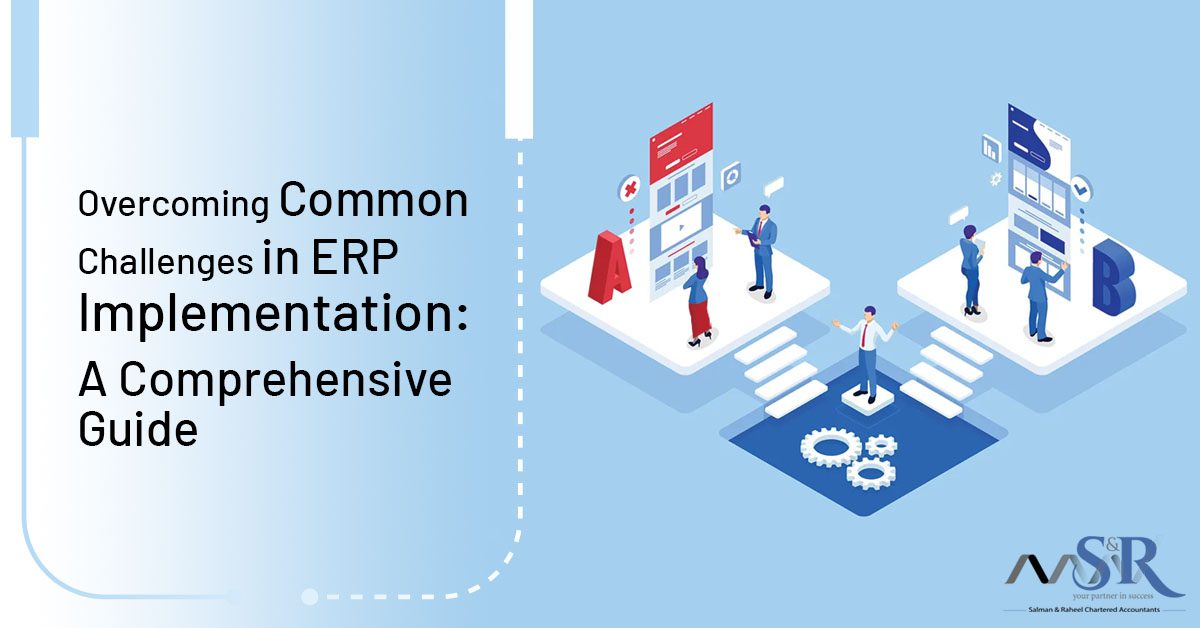 Enterprise Resource Planning (ERP) systems have become essential tools for modern businesses, providing a centralized platform to manage and integrate various core business functions such as finance, human resources, supply chain, and operations. While out-of-the-box ERP solutions offer numerous benefits, businesses often find the need to customize ERP systems to better fit their unique processes and requirements. In this blog, we will discuss the benefits, risks, and considerations associated with ERP customization.
Enterprise Resource Planning (ERP) systems have become essential tools for modern businesses, providing a centralized platform to manage and integrate various core business functions such as finance, human resources, supply chain, and operations. While out-of-the-box ERP solutions offer numerous benefits, businesses often find the need to customize ERP systems to better fit their unique processes and requirements. In this blog, we will discuss the benefits, risks, and considerations associated with ERP customization.
Benefits of ERP Customization
Improved Efficiency and Productivity
Customization allows businesses to tailor the ERP system to their specific workflows, reducing manual interventions and streamlining processes. This can lead to increased efficiency and productivity across departments.
Enhanced Competitive Advantage
A customized ERP system can provide a business with unique capabilities and insights, allowing it to differentiate itself from competitors and achieve strategic goals more effectively.
Better User Experience
Customizing the user interface and features to match the preferences and needs of the workforce can lead to higher user adoption rates and a better overall experience for employees.
Increased Accuracy and Data Integrity
Customization can improve data validation and quality control mechanisms, ensuring more accurate and reliable data across the organization.
Seamless Integration
Customized ERP systems can be designed to integrate seamlessly with other business applications and legacy systems, enabling a unified and cohesive IT infrastructure.
Scalability and Flexibility
Custom ERP solutions can be designed to accommodate business growth and change over time, providing the scalability and flexibility required to adapt to evolving needs.
Risks of ERP Customization
Higher Costs
Customizing an ERP system can be expensive, involving additional costs for development, implementation, testing, and maintenance.
Extended Implementation Time
Customization can prolong the implementation timeline, delaying the benefits of the ERP system and impacting the business’s operations.
Complexity and Maintenance Challenges
Customizations can introduce complexity to the ERP system, making it harder to maintain and support. Upgrades and patches may also become more challenging due to custom code.
Vendor Lock-In
Extensive customization can lead to dependence on the ERP vendor or third-party developers for future support and updates, limiting the business’s options.
Potential for Disruption
Inadequate or poorly executed customization can lead to disruptions in business processes, impacting productivity and customer satisfaction.
Security and Compliance Risks
Customizations can introduce vulnerabilities or compliance issues if not properly vetted and tested, potentially exposing the business to security breaches and regulatory penalties.
Considerations for ERP Customization
Assess Business Needs and Objectives
Before customizing an ERP system, it’s important to conduct a thorough assessment of the business’s needs, goals, and processes. This will help determine which areas require customization and to what extent.
Evaluate Standard Features First
Many ERP systems come with a wide range of standard features that can be configured to meet most business needs. Evaluate these features before deciding on customizations to avoid unnecessary complexity.
Choose the Right Customization Approach
Depending on the business’s requirements, customization can range from simple configurations (such as adjusting settings) to more complex code modifications. Choose the approach that aligns with the business’s needs and minimizes risks.
Plan for Future Upgrades
Customizations can complicate future upgrades and patches. Ensure that custom code is documented, and consider how changes in the ERP system may affect customizations.
Involve Stakeholders
Include key stakeholders from different departments in the customization process to gather input and ensure that the ERP system aligns with their needs.
Prioritize Data Security
Customizations should adhere to data security best practices, including encryption, access controls, and compliance with data protection regulations.
Test Thoroughly
Rigorously test customizations to identify and resolve any issues before deployment. This includes unit, integration, and user acceptance testing.
Budget for Ongoing Maintenance
Customizations require ongoing maintenance and support, so allocate resources for these activities in the budget.
Seek Expertise
Consider engaging experienced consultants or developers with expertise in ERP customization to ensure the project is executed successfully.
Monitor and Review
Continuously monitor the performance of customizations and review them periodically to ensure they continue to meet the business’s needs.
Conclusion
ERP customization can offer significant benefits to businesses by tailoring the system to their specific needs and processes. However, it also comes with risks that must be carefully managed to ensure a successful implementation. By assessing business needs, choosing the right approach, and planning for future maintenance and upgrades, businesses can maximize the value of their ERP customization while minimizing potential drawbacks.


